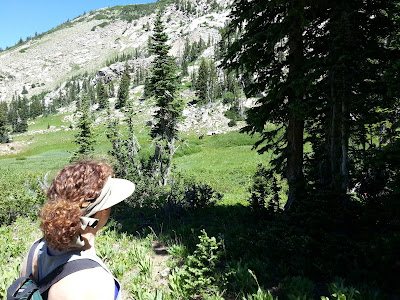The Great Forgetting
The Great Forgetting
This was the title of an earlier piece in The Atlantic, one that dealt with our complacency and our dependency on technology which was now slowly causing us to lose certain learning functions. A simple look back at our use of calculators (when was the last time you balanced your checkbook mentally and without a calculator) or spell-checkers built into our word processors, or map-guiding programs (remember unfolding and thumbing through paper maps?). And while I had written about my mother's slow loss of certain memories in an earlier post, this article in The Atlantic made me think about other losses of memories, a world made easier but for whom? As he opens his piece in the magazine with a commuter airplane crashing, author Nicholas Carr talks of the digital gauges on the control causing confusion and conflicting with the pilot's training, possibly causing his decision to trust the computer which inadvertently caused the plane to crash killing all onboard. Carr wrote: Controlled by onboard computers running immensely complex software, they (the autopiloting systems) gather information from electronic sensors and continuously adjust a plane’s attitude, speed, and bearings. Pilots today work inside what they call “glass cockpits.” The old analog dials and gauges are mostly gone. They’ve been replaced by banks of digital displays. Automation has become so sophisticated that on a typical passenger flight, a human pilot holds the controls for a grand total of just three minutes. What pilots spend a lot of time doing is monitoring screens and keying in data. They’ve become, it’s not much of an exaggeration to say, computer operators...When an autopilot system fails, too many pilots, thrust abruptly into what has become a rare role, make mistakes. Rory Kay, a veteran United captain who has served as the top safety official of the Air Line Pilots Association, put the problem bluntly in a 2011 interview with the Associated Press: “We’re forgetting how to fly.” The Federal Aviation Administration has become so concerned that in January it issued a “safety alert” to airlines, urging them to get their pilots to do more manual flying. An overreliance on automation, the agency warned, could put planes and passengers at risk. In talking with commercial pilots, operating a modern jet with the autopilot controls off is difficult and tiresome and requires constant second-by-second monitoring (in addition to not being able to veer too far in altitude --up or down-- a jet cannot veer more than a few miles side-to-side out of its designated path).New fields of science are now studying our brain patterns, and it would appear that we do indeed need patterns. In a Scientific American piece titled, "Why the Brain Prefers Paper," author Ferris Jabr wrote: In most cases, paper books have more obvious topography than onscreen text. An open paperback presents a reader with two clearly defined domains—the left and right pages—and a total of eight corners with which to orient oneself. A reader can focus on a single page of a paper book without losing sight of the whole text: one can see where the book begins and ends and where one page is in relation to those borders. One can even feel the thickness of the pages read in one hand and pages to be read in the other. Turning the pages of a paper book is like leaving one footprint after another on the trail—there's a rhythm to it and a visible record of how far one has traveled. All these features not only make text in a paper book easily navigable, they also make it easier to form a coherent mental map of the text...In contrast, most screens, e-readers, smartphones and tablets interfere with intuitive navigation of a text and inhibit people from mapping the journey in their minds. A reader of digital text might scroll through a seamless stream of words, tap forward one page at a time or use the search function to immediately locate a particular phrase—but it is difficult to see any one passage in the context of the entire text. As an analogy, imagine if Google Maps allowed people to navigate street by individual street, as well as to teleport to any specific address, but prevented them from zooming out to see a neighborhood, state or country. Although e-readers like the Kindle and tablets like the iPad re-create pagination—sometimes complete with page numbers, headers and illustrations—the screen only displays a single virtual page: it is there and then it is gone. Instead of hiking the trail yourself, the trees, rocks and moss move past you in flashes with no trace of what came before and no way to see what lies ahead.
Something similar was done by pediatric neurosurgeon, Ed Smith, at Boston Children's Hospital. Using a 3-D printer, he printed out a model of the complex routing of a child's brain tumor, allowing him to not only visualize his surgery but also to "tactile feel" his upcoming operation. As the piece in Wired pondered: Doctors have long used MRIs and CT scans to help visualize tumors, of course. But when the visualization is physical, it has a haptic impact that screens do not. You learn new things. That’s why architects build scale models of their buildings: Only by peering around a structure do you “get” what’s going on. “You see these spatial relations and depth of field that aren’t possible onscreen,” Smith says...It works for more than brains. Last winter, NASA astronomers printed a model of a binary-star system to help them visualize its complex solar winds, and “we discovered a number of things we hadn’t fully appreciated,” says Thomas Madura, a NASA visiting scientist.
 |
| A moose in the distance along our walk. |
 |
| Some of the wildflowers along the trail |



Comments
Post a Comment
What do YOU think? Good, bad or indifferent, this blog is happy to hear your thoughts...criticisms, corrections and suggestions always welcome.